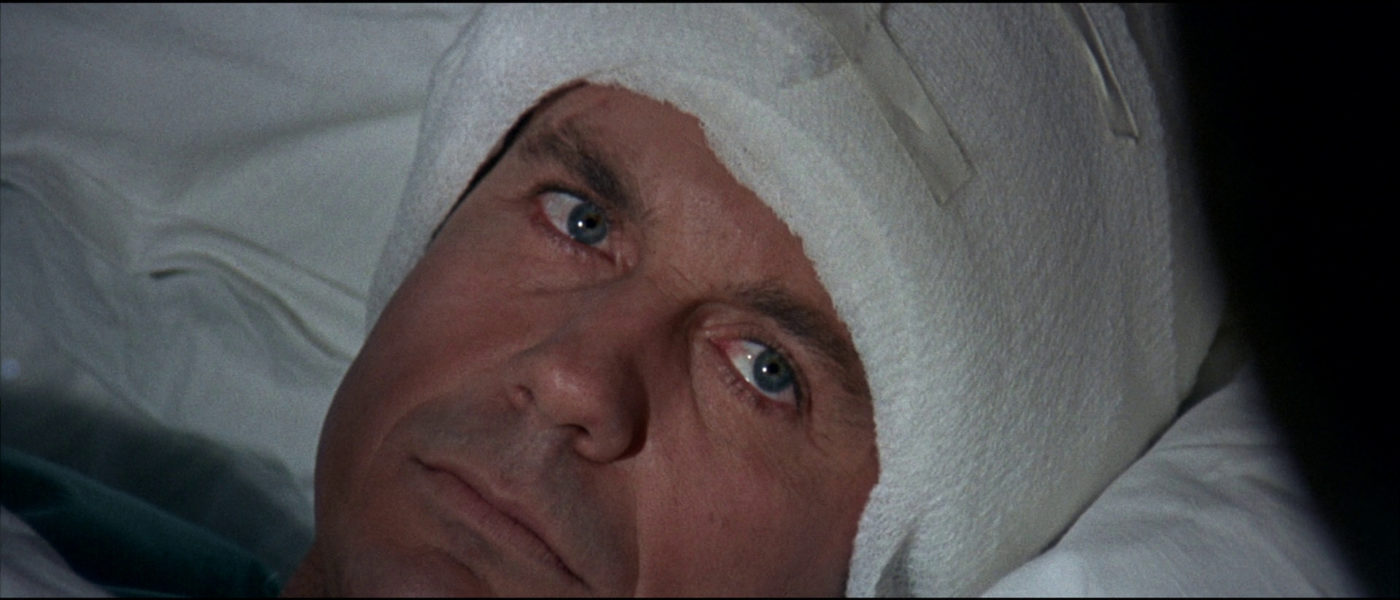The Many Mirrored (And Mirroring) Images Of Charlie Gordon
DIRECTED BY RALPH NELSON/1968
STREET DATE: FEBRUARY 5, 2019/KINO LORBER STUDIO CLASSICS
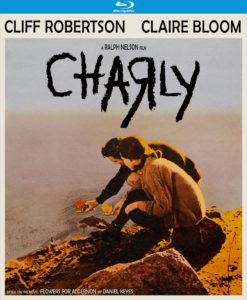
Director Ralph Nelson’s feature remake of a television anthology episode, based on an award-winning short story that became a classic novel, also became an inescapable staple of an entire generation’s worth of high school English classes, psychology courses, and drama clubs in its myriad of reflecting forms. Returning to television and film multiple times in at least ten different countries, which inspired further adaptations on stage and radio, author Daniel Keyes’s original 1958 short story and 1966 novel Flowers for Algernon, first turned into an hour-long TV drama starring Cliff Robertson titled The Two Worlds of Charlie Gordon in 1961, provided the basis for the returning star’s personal feature film project, re-titled in 1968 as simply Charly. Stylized as the title character initially writes his name in the story and novel’s time-dated assemblage of first-person diary entries, progress reports, and personal reflections, Charlie Gordon’s mental journey from limited intelligence to artificially-enhanced genius — the isolating rise and grueling disintegration of which forms the narrative’s triumph and tragedy — finds its still most striking expression in star Cliff Robertson’s touching performance, scriptwriter Sterling Silliphant’s strong adaptation, and director Ralph Nelson’s (controversially) innovative presentation.
The many Charlie Gordons that have been before and since will be familiar to readers of Daniel Keyes’s short story and novel, where each version of the character’s rising and fading psyche remains ultimately embedded in Charly’s sense memory with his final, devastating missive, “please if you get a chanse put some flowrs on Algernons grave in the bak yard.” Algernon, the white lab mouse whose maze-trip through the rising-and-falling turns of a university research institute’s experiment accompanies the human subject’s own, is as much another Charly as the hall of mirror images that develop and expand through growing awareness, romantic expression, and deepening desire for human connection. Across several story-mediums and mirrored (and mirroring) reflections alike, all the Charlys that were remain within all the Charlys that are and will be.
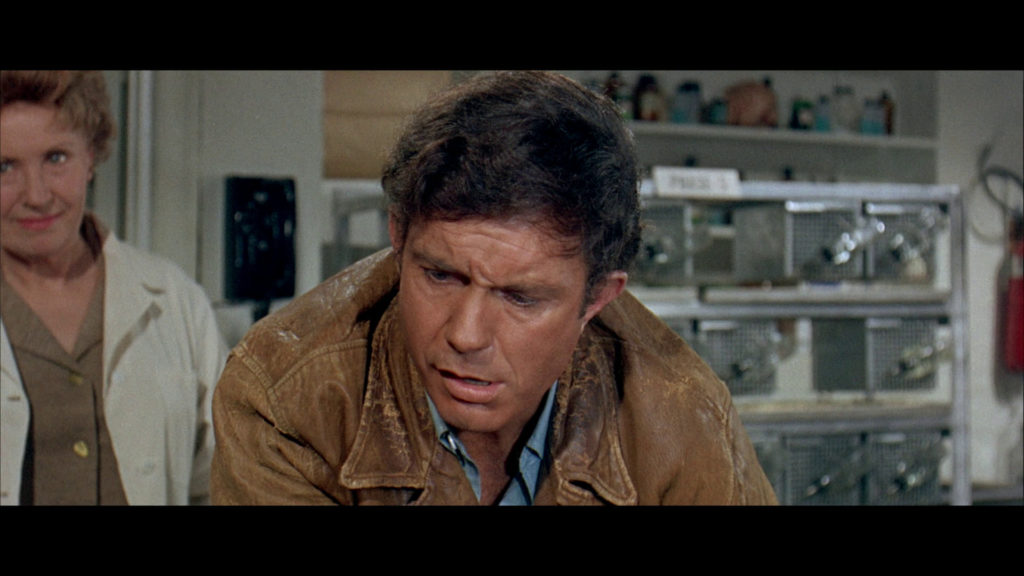
Charly begins in 1968 in the city of Boston — the historically suggestive setting as important in this adaptation as the year in which it is set — with the title character (Robertson) a lowly bakery assistant who attends evening classes in a Sisyphean struggle to bolster basic knowledge and life skills that slip sieve-like through a biochemically-impoverished consciousness. An instructor and graduate student at a mental research laboratory, Alice Kinnian (Claire Bloom), has noted this strong drive for self-improvement — particularly a hard-won ability to read and write — and recommends Charlie (or, as he writes it, Charly; with an inverted upper-case “R”) for a new surgical procedure spear-headed by Doctors Straus (Lilia Skala) and Nemur (Leon Janney) that has turned a white lab mouse, Algernon, into a maze-running übermaus capable of scratching ancient runic symbols into the bottom of his cage. The surgery an apparent success on its human subject, Charly’s IQ expands to genius levels as his changing perception, circumstances, and even his identity radically alter his understanding of the world and his place in it. Even as the potential of Charly’s mind and his romance with Miss Kinnian blooms, however (potential pun on the leading actress’s name noted but unintended), the effects of the surgery wear as Algernon and then Charly himself painfully revert to their former mental states.
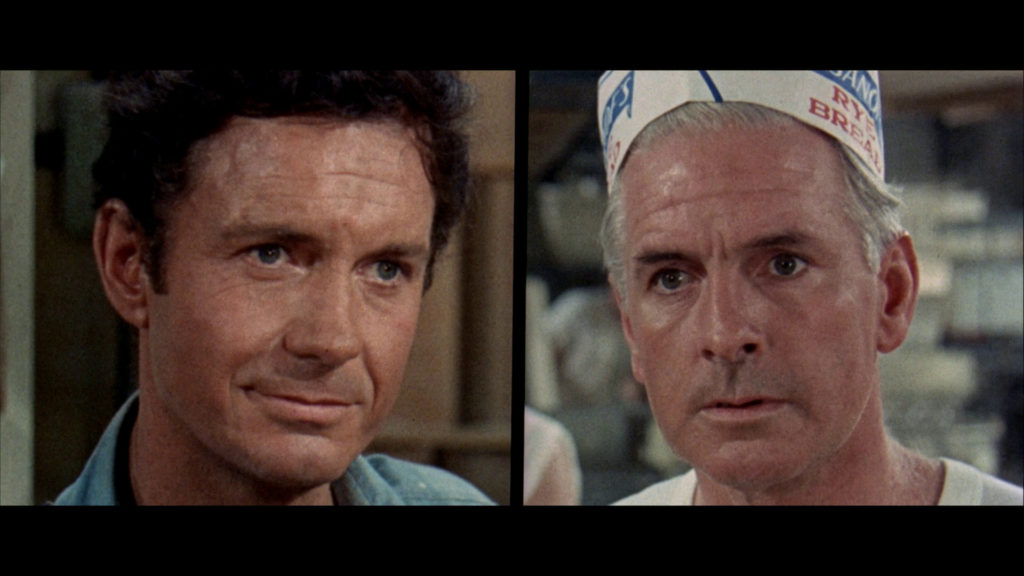
Limited to Charly’s point of view in the written story, where the isolating and alienating counter-effects of his growing intelligence are keenly felt and conveyed, director Ralph Nelson, a Golden Age of Television auteur who made his feature debut adapting his 1956 live television production of Rod Serling’s Requiem for a Heavyweight into a 1962 film — parlaying this success into a string of politically and socially relevant dramas including Lilies of the Field (1963), Duel at Diablo (1966), and Soldier Blue (1970) — expands upon the emotional content of Charly’s plight alongside other characters’ observation of it. As stated, the setting (Boston) and year (1968) become as important in Nelson’s film as the story’s thematic portrayal of and ramifications on human intelligence: where co-workers, fellow students, experimenting scientists, and even his landlady (Ruth White) contextualize Charly’s mental and emotional development, and the staggered gap that exists between the two, through their changing reactions to and shifting behavior towards him at each stage of the experiment. Using split-screen, optical effects, editing tricks, photography filters, dramatic lighting, and other hyper-NOW techniques that mark its late 60’s milieu — culminating in the climactic scientific seminar where all come into play with the added dimension of Charly-now framed against and silently observing multi-screens projecting Charly-was — the, again, many mirrored (and mirroring) images of Charlie Gordon in Charly reflect its time and place in a way that may feel irretrievably dated to some viewers seen today, but nonetheless retain its honesty in portrayal and fidelity to its source material upon a deeper (self-)reflection.
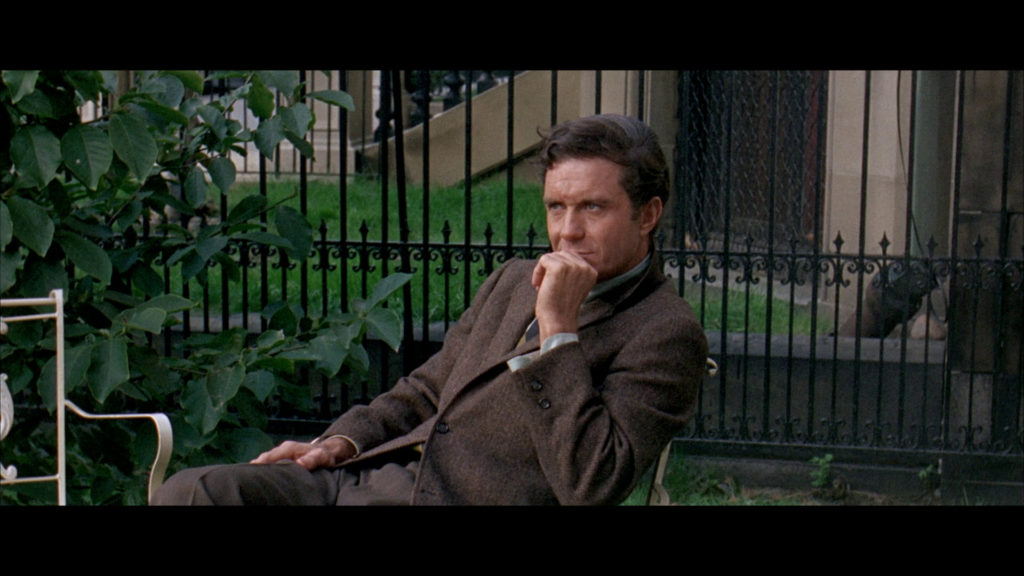
In this regard, especially, the romance between Charly and Alice — given a greater emphasis in the movie than in the novel, and taking up the central focus of the film-narrative’s middle section — serves to impart a stronger motivation for preserving the Charly-self capable of understanding, receiving, and returning love, and Charly’s ultimate realization that that self is rapidly fading makes the audience feel his plight in movie terms equal to the reader’s intellectual understanding derived from the book’s devolving first-person grammar, spelling, and syntax. Freeze-framing to Alice’s view of Charly exactly where he began — an unknowing, child-level awareness playing in the park — Charly leaves open-ended the question of whether all those Charlys that were still reside somewhere within. Depending on the film’s individual impact, this reviewer believes a deeper involvement with the story and character may present a rewarding response to that question.
Kino Lorber’s Blu-ray arrives re-mastered in 2K, the 2:35:1 scale even on a smaller TV suggesting the impressive exhibition-level presentation to which audiences responded strongly in 1968. Adding immeasurable value, and equally recommended for sympathetic viewers of Charly, is Howard S. Berger’s and Nathaniel Thompson’s 2018-recorded commentary, which defends and celebrates both the varied techniques of this adaptation (as an adaptation among many) alongside the guiding intelligence behind it all, achieved through the challenging point of view of its director and the sensitive performance of its star. Charly, film and character, at one point reflects where we will be in the year 2018 — the character’s answers to the mental symposium’s barrage of questions on the “future” seeming all too prescient in 1968 — so one hopes the here-and-now through Charly may offer equal reflection on the what-was and what-can-(and-could-)be in equally optimistic terms to the reflective (and reflecting) Charlys that were and (hopefully) will be.
The images used in this review are credited to DVDBeaver and visually reflect the image quality of Kino Lorber’s Blu-ray release. Thanks to Kino Lorber for providing this Blu-ray review copy.


